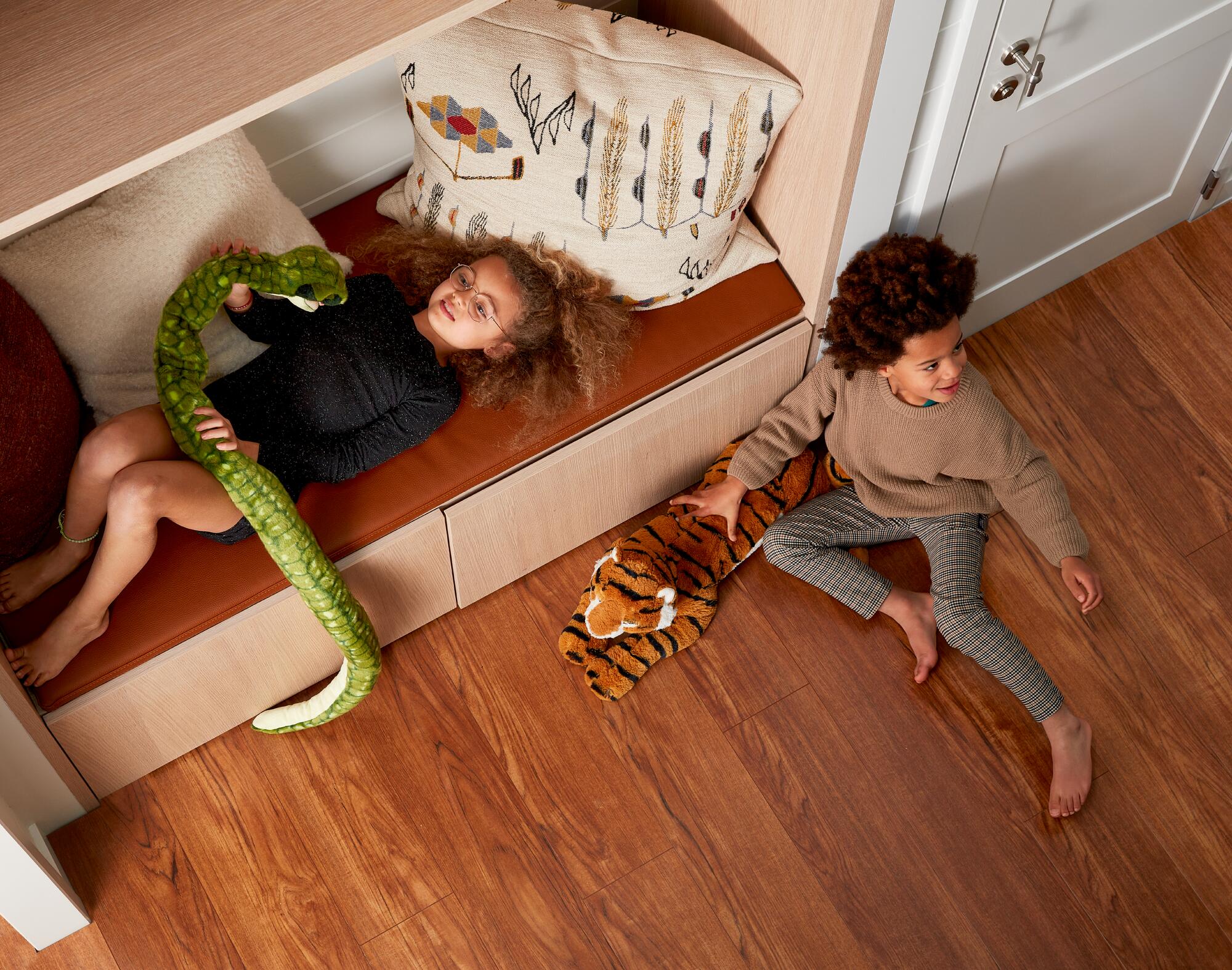Buying parquet flooring or laminate? Both have their advantages and disadvantages. We’ll zoom in on the differences to help you decide which one is a better match for your project.
Charming parquet or luscious laminate flooring: the look and feel
Do you like parquet floors?
When you think of parquet floors, you probably envision majestic mansions or regal country houses with quaintly creaking, warm wooden flooring. This authentic charm is one of the great advantages of parquet. Additionally, parquet flooring is made of real wood that has a really natural feel, because that is exactly what it is. The floor feels warm beneath your feet. Lovely if you enjoy walking barefoot through the house!
A parquet floor brings out the grains, hues, and coarse structure of the pure wood in a natural way. Not a single board - even when made from the same type of wood - is identical, because the material originates from nature itself. This means the authentic look of your parquet floor only comes to life after its installed. Would you rather have the same pattern across your entire floor? Or would you like to combine patterns? Then parquet may not be the choice for you.
Or does laminate flooring appeal to you more?
Even though laminate feels a bit colder under the feet, it can still have the appearance of a wood surface. Of course, the look of parquet cannot fully be reproduced, but the result will come close. Would you like to determine the structure yourself, for example by opting for beautiful, straight lines? Then laminate flooring is the right option for you. Choose it at the store, and have it on your floor in no time. Moreover, you’ll be able to choose from a wider array.
What’s the price difference between parquet and laminate?
Generally speaking, parquet flooring tends to be more expensive than laminate, though this mostly depends on the quality and type of wood used. Laminate definitely provides the most budget-friendly option, though the cheapest floors won’t last the longest. In other words, it’s okay to think about your budget now, but make sure to consider long-term costs as well.
How are laminate and parquet produced?
Parquet either consists entirely of solid wood, or is made up of multiple layers with a solid wood top layer. A laminate top layer contains a mixture of paper and resin. Both types of flooring offer the possibility to opt for a high-density fibreboard (HDF) core layer. This will enhance the stability of the product.
Parquet flooring is usually treated with oil or lacquer. Oil permeates the wood, thus retaining the authentic structure. If you opt for an oiled parquet floor, you'll need to reapply oil after a while. Lacquer is a layer applied to the surface and is not absorbed by the wood. Since this layer is harder, it is more resistant against scratches and dirt. You can choose between a glossy or matt finish. The laminate top layer offers extra protection against scratches and moisture.
How long does a parquet or laminate floor last?
Especially in case of intensive use, scratches and dents will occur more easily on parquet than laminate. This is because the surface of laminate is harder and has been given a protective top layer. A good idea for anyone who has young children or pets at home.
Parquet is naturally softer, even after being treated with oil or lacquer. Oops, dropped a cooking pot? A parquet floor is more likely to be slightly damaged. After a while, you can sand parquet flooring and apply a new finish to get rid of imperfections and scratches. This is obviously not possible with a laminate floor.
It takes a lot longer before your laminate is damaged, but once that happens, there’s no remedy.
Laying laminate or parquet flooring
You can lay both parquet and laminate yourself. Laminate flooring features a click system, perfect for DIY use. Even parquet that consists of two or three layers, including a solid wood top layer of at least 2.5mm, often features an easy click system. Laying so-called solid parquet - the most expensive option - is more challenging. These type of floorboards feature a tongue and groove design, which requires glueing.
Wooden floors in the kitchen or bathroom
Water is often spilt in the kitchen or in the bathroom. This is especially problematic for untreated wooden floors. If the water is absorbed, you risk permanent spots or even crooked boards. This is why we recommend treating your floor to enhance its water resistance. However, this offers no guarantees, because regular contact with water (including mopping your floor) could darken the edges and deep grooves of the wood.
Extra water-resistant laminate offers the best protection against water. Parquet is best protected with a coating. Spilt water on your parquet floor? There’s a high likelihood that you will be left with dark circles or spots.

laminate - Ocean+ - Gyant Select light brown
Choosing between laminate or parquet
The ideal choice depends on your personal taste and preference regarding ease of maintenance, water resistance, and ease of fitting. Alternatively, you could, for example, opt for the warm look and welcoming feel of parquet in the hall and living room, and go with laminate for the rest of the home because it’s easy to maintain and more budget-friendly.
What’s the difference between laminate and parquet?
|
Laminate |
Parquet |
| More budget-friendly | More expensive |
| Colder feel | Warmer feel |
| More scratch-resistant | Imperfections can be sanded |
| Easy click system | Easy click system, except for solid parquet |
| Water-resistant variants available | Not water-resistant |
| Consistent pattern | Authentic wood with natural variation |
Would you like to see and experience the difference between parquet and laminate flooring for yourself?








.jpg?width=300&name=Design%20sans%20titre%20(31).jpg)

